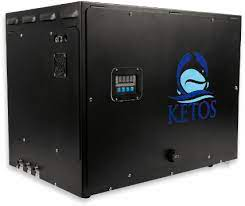Remotely Measure Levels of Magnesium in Water
Monitoring Water for Magnesium With KETOS SHIELD
Need a modern approach to water quality testing? Help your business automate the process, lower costs, and get real-time lab-accurate results across various parameters – including magnesium.
Accurately Measure Levels of Magnesium in Water
Download our latest overview to learn how:
- Users can enable an early-warning system and set their own threshold alerts to measure, manage, and monetize water as a resource
- KETOS eliminates the need for manual processing, handheld devices, and third-party lab analysis
- Our technology continues to be EPA-compliant and lab-accurate (with measurements in ppb)
- Water operators can gain actionable insights and predictive intelligence via automated data collection and analysis
Learn To Automate Magnesium Testing In Water With Lab-Accurate Results in Real-Time
"*" indicates required fields
Testing for Magnesium in Water
 KETOS SHIELD offers water quality monitoring in real-time. Lower your organization’s up-front costs with our industry-leading $0-CAPEX subscription model while analyzing magnesium levels and other water testing parameters.
Discover our proprietary intelligent water management solution, KETOS SHIELD. With KETOS, water operators can access 30+ water testing parameters (including magnesium). Choose your variables, customize your dashboard, set threshold alerts, and gain real-time insights under one simple device.
KETOS SHIELD offers water quality monitoring in real-time. Lower your organization’s up-front costs with our industry-leading $0-CAPEX subscription model while analyzing magnesium levels and other water testing parameters.
Discover our proprietary intelligent water management solution, KETOS SHIELD. With KETOS, water operators can access 30+ water testing parameters (including magnesium). Choose your variables, customize your dashboard, set threshold alerts, and gain real-time insights under one simple device.
Why Monitor Water for Magnesium with KETOS
As an abundant, naturally occurring element, magnesium is found in water and can significantly contribute to water hardness. Magnesium has many industrial and production applications, including as an alloying agent with aluminum. This makes it an essential componant in beverage cans, electrical equipment, tools, sporting equipment, and more. Magnesium is a desulphurizing and deoxidizing agent in the ferrous metal industry. It’s a reducing agent used widely when producing various reactive metals (like titanium). Since magnesium contributes to total water hardness, many organizations require it to be monitored in industrial water infrastructure. By observing and controlling magnesium levels, operators can prevent buildup that may cause equipment downtime. As a contributor to water hardness, it may also cause soap to lose its effectiveness in cleaning processes. Therefore, careful monitoring ensures that high levels do not adversely affect uptime.What are the Issues with Magnesium in Water?
 KETOS provides advanced water quality monitoring for magnesium, using real-time data and intelligent sensors to detect and manage contamination levels, ensuring safety and regulatory compliance.
KETOS provides advanced water quality monitoring for magnesium, using real-time data and intelligent sensors to detect and manage contamination levels, ensuring safety and regulatory compliance.- Health Implications: While magnesium is beneficial for human health in appropriate quantities, excessive levels in drinking water can lead to adverse health effects. Consuming water with high magnesium concentrations may cause gastrointestinal discomfort, diarrhea, and laxative effects. Individuals with certain medical conditions, such as kidney disease or heart conditions, may be more susceptible to magnesium-related health issues.
- Aesthetic Concerns: High levels of magnesium in water can affect its taste, odor, and appearance, leading to complaints from consumers. Water with elevated magnesium concentrations may have a bitter or metallic taste and may exhibit cloudiness or turbidity. These aesthetic issues can reduce consumer satisfaction and confidence in water quality.
- Scale Formation: Magnesium is a major contributor to scale formation in water heating systems, boilers, and household appliances. When water with high magnesium levels is heated, magnesium carbonate and magnesium hydroxide precipitate out of solution and form scale deposits on surfaces. Scale accumulation can reduce energy efficiency, impair equipment performance, and increase maintenance costs for homeowners and businesses.
- Soap Scum: High magnesium levels in water can interfere with the lathering and cleaning properties of soap, leading to the formation of soap scum on surfaces. Soap scum can accumulate on sinks, bathtubs, and shower walls, making cleaning more challenging and affecting personal hygiene routines. Additionally, soap scum can contribute to clogged drains and plumbing issues, further exacerbating maintenance challenges.
- Livestock and Agriculture: Elevated magnesium levels in drinking water for livestock can have implications for animal health and agriculture. High magnesium concentrations in water sources used for irrigation or livestock watering may affect soil quality, crop productivity, and animal health. Managing magnesium levels in agricultural water supplies is crucial for sustaining farming practices and ensuring optimal conditions for crop growth and livestock welfare.
- Treatment Considerations: Addressing magnesium contamination in water sources may require specialized treatment methods, such as ion exchange, reverse osmosis, or chemical precipitation. These treatment technologies can effectively remove magnesium ions from water, but they may incur additional costs and require ongoing maintenance to ensure consistent water quality.
Causes of Magnesium in Water
Magnesium is a common mineral found in water sources, with its presence influenced by geological, environmental, and anthropogenic factors. One significant cause of magnesium in water is the dissolution of magnesium-containing minerals in the earth’s crust, such as dolomite and magnesite. As water percolates through soil and rock formations, it can dissolve magnesium minerals, increasing the magnesium concentration in groundwater. Additionally, weathering processes and erosion contribute to the release of magnesium into water bodies. Human activities, including agricultural practices and the use of fertilizers, can also introduce magnesium into water sources through runoff and irrigation. While magnesium is essential for human health and is often present in drinking water at safe levels, elevated concentrations can affect water taste and appearance. Understanding the sources and levels of magnesium in water is crucial for maintaining water quality and ensuring its suitability for various uses.Acceptable Levels of Magnesium in Water by Industry
The acceptable levels of magnesium in water vary across industries due to differing requirements and regulations. Generally, for drinking water, the acceptable level of magnesium ranges from 10 to 30 milligrams per liter (mg/L), depending on regional standards and health considerations. In industrial settings such as agriculture, food processing, and pharmaceuticals, higher concentrations of magnesium may be tolerable or even necessary for specific processes. For instance, in agricultural irrigation, magnesium levels up to 50 mg/L are commonly acceptable, as magnesium plays a role in plant growth and nutrient uptake. Conversely, in industries like electronics manufacturing, lower magnesium levels are often preferred to prevent mineral buildup and corrosion. Maintaining optimal magnesium levels in water is essential to ensure the efficiency and safety of various industrial processes while also considering environmental impact and regulatory compliance.| Industry | Acceptable Levels of Magnesium (mg/L) |
|---|---|
| Drinking Water | 10 – 30 |
| Agriculture | Up to 50 |
| Food Processing | Varies, depending on process |
| Pharmaceuticals | Varies, depending on process |
| Electronics Manufacturing | Lower levels preferred, typically below 10 |
How to Easily Monitor Water for Magnesium
Instead of measuring magnesium with a meter that only measures a handful of conditions; the KETOS SHIELD is capable of mentoring dozens of water related issues — in real-time. Monitor for magnesium and 30+ (and counting) water testing parameters with KETOS SHIELD. With KETOS SHIELD, monitoring for magnesium is just the beginning. Explore a growing suite of over 30 water testing parameters, ensuring a comprehensive understanding of water quality. From conductivity to microbial contaminants, KETOS SHIELD empowers organizations with thorough insights for effective water management and regulatory compliance. Whether you need to detect manganese in well water, measure molybdenum in wastewater, or monitor mercury in the mining industry, KETOS’ automated water monitoring can save you time and reduce compliance issues.What Water Quality Parameter Do You Test Most Often?
The KETOS SHIELD remotely monitors dozens of water quality parameters. Which one do your water operators test most often?
KETOS Awards
















About KETOS
KETOS is a fully integrated platform that combines hardware, software, connectivity, automated reporting, predictive analytics, and maintenance to automate water monitoring and testing. KETOS enables water operators to identify and solve mission-critical water efficiency and quality challenges in real-time, or before they happen through predictive algorithms, to ensure that water meets specific quality and safety standards.
Copyright © – KETOS.co

